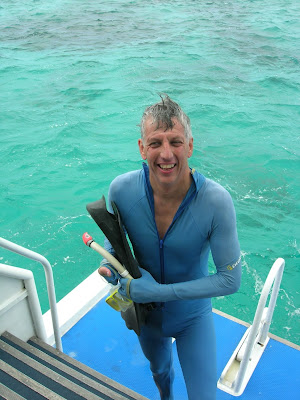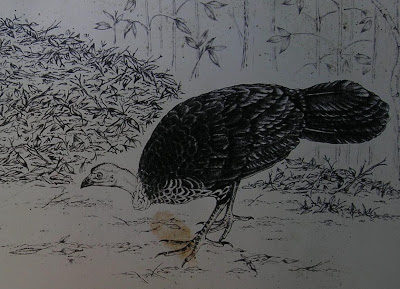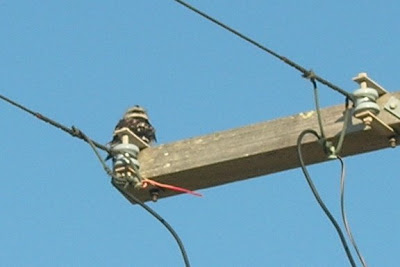While at Port Douglas, we visited the crocodile reserve. Everything crocodiles, lazing on the shore, in the lake, in the gift shop, and perhaps even on the canteen menu. There was an amusing lecture about lizards and snakes, but the definite highlight was the lecture about crocodiles, the star being Bart.
Bart was an old croc; certainly not the quickest croc in the swamp and I suspect that the management had given him rubber teeth. So, have a look at the video (sorry again about the quality) and decide for yourself if you could try a go at being a crocodile keeper...
 new experiences - and we have had lots of those.
new experiences - and we have had lots of those. see that the 24 hours lost when we crossed the International Date Line exactly compensated for all the other changes. Which is what you would hope would happen, since we ended up exactly back where we started.
see that the 24 hours lost when we crossed the International Date Line exactly compensated for all the other changes. Which is what you would hope would happen, since we ended up exactly back where we started.
 And we didn't see one Kangaroo while we were in Australia. But of course we have one at home:
And we didn't see one Kangaroo while we were in Australia. But of course we have one at home: 





 The small skyscrapers in the picture are tall - must be 50 or 60 storeys high. The really big one is therefore abolsutely massive - it's the '2IFC' (IFC stands for the International Finance Centre) and it must be well over a 100 floors high.
The small skyscrapers in the picture are tall - must be 50 or 60 storeys high. The really big one is therefore abolsutely massive - it's the '2IFC' (IFC stands for the International Finance Centre) and it must be well over a 100 floors high.





















 Yes, once the chicks are hatched, the scrub turkey parents feel that they've done their bit, and leave their offspring to make a go of it as they will. Modern progressive thinking! I feel that there is something here which all parents should seriously consider....
Yes, once the chicks are hatched, the scrub turkey parents feel that they've done their bit, and leave their offspring to make a go of it as they will. Modern progressive thinking! I feel that there is something here which all parents should seriously consider.... 














 The scale is difficult to appreciate - my estimation was that it was about 1000 foot (325m) from where we were at the top of the cliffs to the valley floor; and we could see about 10 miles to the horizon.
The scale is difficult to appreciate - my estimation was that it was about 1000 foot (325m) from where we were at the top of the cliffs to the valley floor; and we could see about 10 miles to the horizon. Here is a picture of one of the many types of fern seen in the forest:
Here is a picture of one of the many types of fern seen in the forest:
